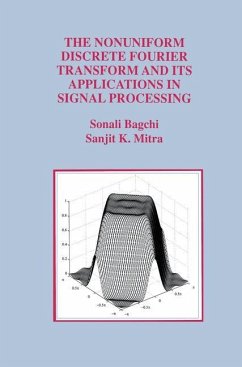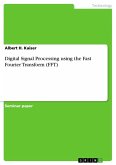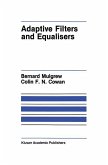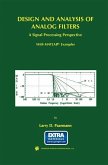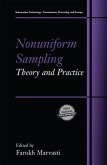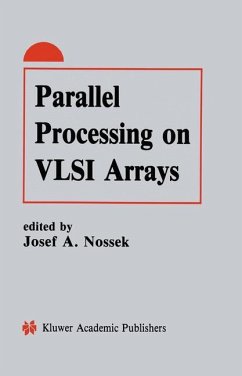The Nonuniform Discrete Fourier Transform and its Applications in Signal Processing is organized into seven chapters. Chapter 1 introduces the problem of computing frequency samples of the z-transform of a finite-length sequence, and reviews the existing techniques. Chapter 2 develops the basics of the NDFT including its definition, properties and computational aspects. The NDFT is also extended to two dimensions. The ideas introduced here are utilized to develop applications of the NDFT in the following four chapters. Chapter 3 proposes a nonuniform frequency sampling technique for designing 1-D FIR digital filters. Design examples are presented for various types of filters. Chapter 4 utilizes the idea of the 2-D NDFT to design nonseparable 2-D FIR filters of various types. The resulting filters are compared with those designed by other existing methods and the performances of some of these filters are investigated by applying them to the decimation of digital images. Chapter 5 develops a design technique for synthesizing antenna patterns with nulls placed at desired angles to cancel interfering signals coming from these directions. Chapter 6 addresses the application of the NDFT in decoding dual-tone multi-frequency (DTMF) signals and presents an efficient decoding algorithm based on the subband NDFT (SB-NDFT), which achieves a fast, approximate computation of the NDFT. Concluding remarks are included in Chapter 7.
The Nonuniform Discrete Fourier Transform and its Applications in Signal Processing serves as an excellent reference for researchers.
The growth in the field of digital signal processing began with the simulation of continuous-time systems in the 1950s, even though the origin of the field can be traced back to 400 years when methods were developed to solve numerically problems such as interpolation and integration. During the last 40 years, there have been phenomenal advances in the theory and application of digital signal processing. In many applications, the representation of a discrete-time signal or a sys tem in the frequency domain is of interest. To this end, the discrete-time Fourier transform (DTFT) and the z-transform are often used. In the case of a discrete-time signal of finite length, the most widely used frequency-domain representation is the discrete Fourier transform (DFT) which results in a finite length sequence in the frequency domain. The DFT is simply composed of the samples of the DTFT of the sequence at equally spaced frequency points, or equivalently, the samples of its z-transform at equally spaced points on the unit circle. The DFT provides information about the spectral contents of the signal at equally spaced discrete frequency points, and thus, can be used for spectral analysis of signals. Various techniques, commonly known as the fast Fourier transform (FFT) algorithms, have been advanced for the efficient com putation of the DFT. An important tool in digital signal processing is the linear convolution of two finite-length signals, which often can be implemented very efficiently using the DFT.
The Nonuniform Discrete Fourier Transform and its Applications in Signal Processing serves as an excellent reference for researchers.
The growth in the field of digital signal processing began with the simulation of continuous-time systems in the 1950s, even though the origin of the field can be traced back to 400 years when methods were developed to solve numerically problems such as interpolation and integration. During the last 40 years, there have been phenomenal advances in the theory and application of digital signal processing. In many applications, the representation of a discrete-time signal or a sys tem in the frequency domain is of interest. To this end, the discrete-time Fourier transform (DTFT) and the z-transform are often used. In the case of a discrete-time signal of finite length, the most widely used frequency-domain representation is the discrete Fourier transform (DFT) which results in a finite length sequence in the frequency domain. The DFT is simply composed of the samples of the DTFT of the sequence at equally spaced frequency points, or equivalently, the samples of its z-transform at equally spaced points on the unit circle. The DFT provides information about the spectral contents of the signal at equally spaced discrete frequency points, and thus, can be used for spectral analysis of signals. Various techniques, commonly known as the fast Fourier transform (FFT) algorithms, have been advanced for the efficient com putation of the DFT. An important tool in digital signal processing is the linear convolution of two finite-length signals, which often can be implemented very efficiently using the DFT.

